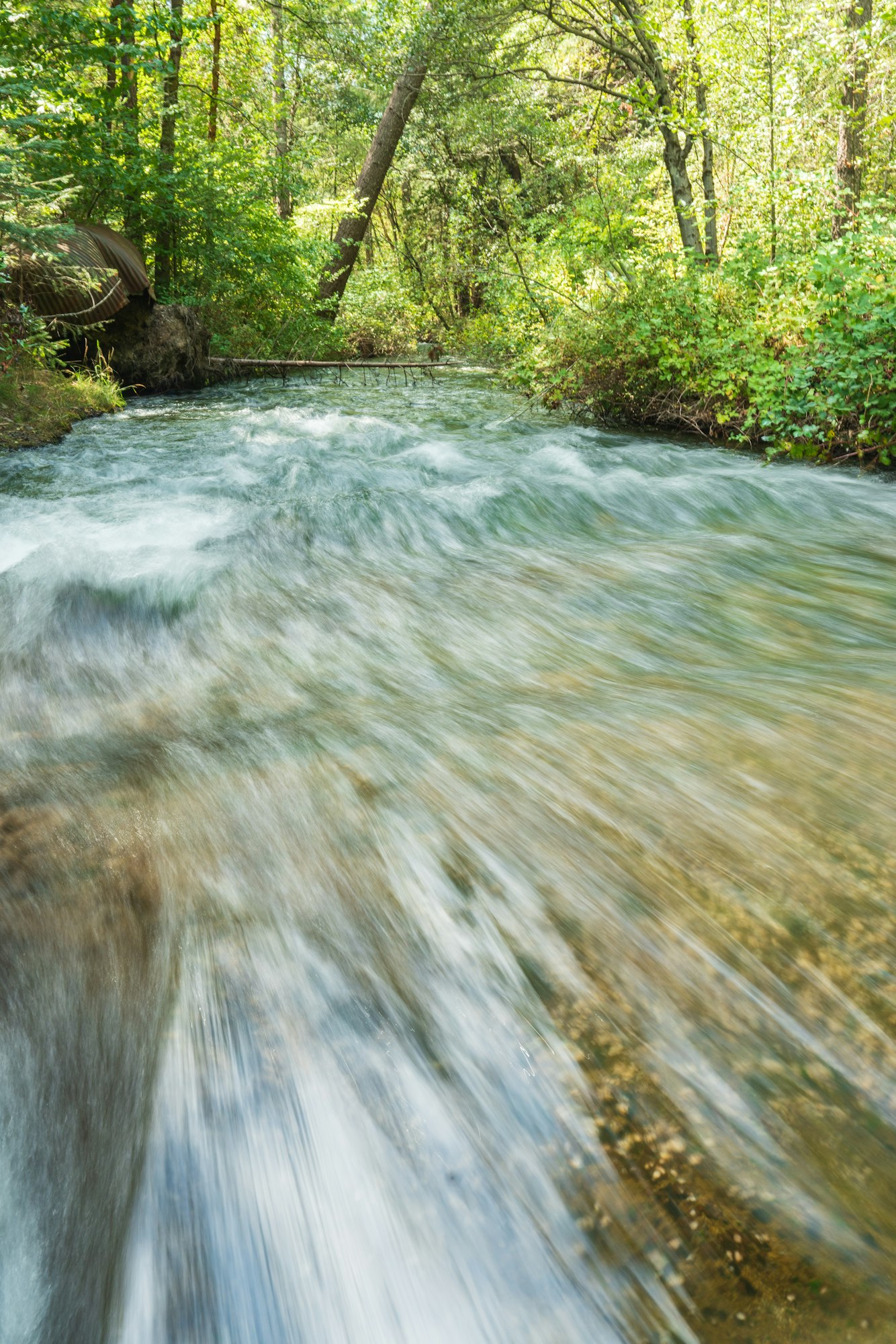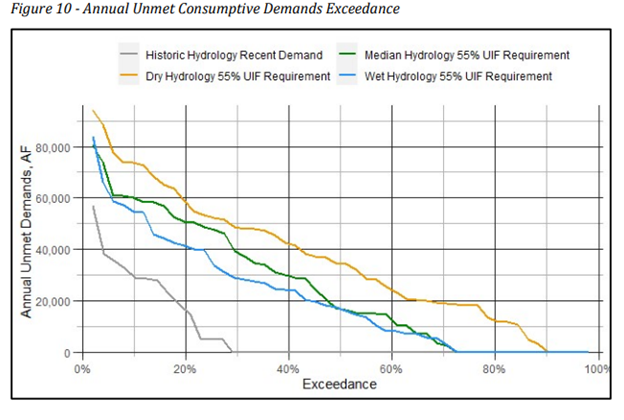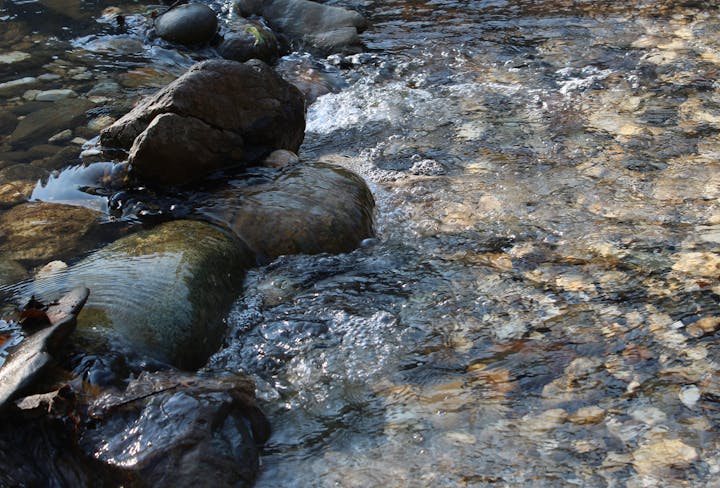Bay-Delta Water Plan Update

Impacts to NID Water Supply and Opportunities for Healthy Rivers and Landscapes
What’s the issue?
The question is how to provide for imperiled fish in the San Francisco Bay/Sacramento-San Joaquin Delta (Bay-Delta), including salmon and delta smelt, among others.
The California State Water Resources Control Board (State Water Board) is working to update an action plan to save the declining fish populations and improve water quality.
It recently released a draft staff report, which is an environmental assessment of a range of alternate approaches. These include numerous iterations of unimpaired flow and a holistic alternative called the Healthy Rivers and Landscapes Program.
Depending on the State Water Board's decision, NID's viability could be threatened.
Alternatives will make a difference
Unimpaired Flows
Unimpaired flow is the water that occurs without diversions. The proposed state plan recommends a flow-only approach that would require unimpaired inflows of 55 percent (within a 45-65 percent adaptive range) from rivers and tributaries to the Bay-Delta to support threatened fish. The Yuba and Bear rivers are included.
Unimpaired flows are defined as water flowing in streams that would occur if all runoff from the watershed remained in tributaries without dam storage or diversions.
At first glance, the 55 percent unimpaired approach does not appear so detrimental. But looking deeper we find that it forsakes our local water supply and adequate aquatic habitat for the imperiled fish in question.
The unimpaired flow alternatives would severely limit the amount of water NID would be allowed to capture and store in its reservoirs. The reduction of allowable diversions would result in large swings of water surface elevations in these reservoirs throughout the year. It would also create water supply constraints, leading to more frequent water rationing, especially for NID irrigation water users.
Reduction in available water supplies would cause an increase in water rates; reduce the production of hydropower generation; impair recreation in many areas; and cause negative impacts to the many people, animals, and other species that rely on the NID system for water and habitat.
Healthy Rivers and Landscapes Program Voluntary Agreements
The Healthy Rivers and Landscapes Program (Agreements) is an alternative to the flow-only recommendation. The Agreements propose a suite of actions that are far broader, with more benefits and fewer impacts than unimpaired flows. The approach reduces unintended consequences resulting from severely reducing allowable diversions. Implementation of this holistic program includes flow contributions, the construction of fish habitat projects, multiple funding sources, and governance, science and adaptive management programs that are more beneficial to fish and water users. The program is also designed to be adaptive to allow for modifications as needed as time goes on.
This holistic approach has strong support of NID. Beyond significant improvements for declining fish populations and wildlife habitat, it recognizes the District's commitment to providing essential water supply reliability for its customers and communities. We depend on water diversions of Sierra snowmelt into reservoirs to distribute to local farms, fields, households, and cities.
This approach will also allow District water managers to adapt operations based on real-time conditions and enable broad coordination across watersheds to manage flows for maximal benefits. This more flexible, adaptive management is critical as climate change increases uncertainty and drives extreme conditions.
Who's supporting the Agreements? This approach is proposed by the Secretaries of California’s Environmental Protection Agency and Natural Resources Agency, the Directors of the Departments of Water Resources and Fish and Wildlife, the U.S. Bureau of Reclamation, and numerous water agencies.
Benefits of the Agreements:

- Integrating functional flow and non-flow measures, including habitat restoration and landscape reactivation.
- Building a robust governance program that would oversee the implementation of the Agreements.
- Developing a sound, shared, modern science program that would be the basis for adaptive management decision-making.
- Establishing stable funding sources for implementation.
- Providing for the early implementation of projects to accelerate improvements for fish and wildlife.
- Partnering opportunities with diverse parties includes participation from state and federal agencies, tribes, public water agencies, and conservation groups.
- Supporting the coequal goals of the Delta of providing a more reliable water supply for California and protecting, restoring, and enhancing the Delta ecosystem.
Impacts to Water Supply
NID would not have enough supply to meet demand 7 out of 10 years
NID commissioned a computer modeling program to determine our regional future water supply in the face of climate change and projected demands. Three climate model methodologies were used to bookend outputs: a dry future climate with high demand; a median future climate with baseline demand; and a wet future climate with low demands. NID then applied a 55 percent unimpaired flow requirement to the model scenarios.
The results showed that on average under the 55%UIF scenario, NID would face a water supply deficit in more than 70 percent of the next 50 years moving forward.
Background: NID counts on more than 120,000 acre-feet of runoff every year as water supply for its customers (an acre-foot is the amount of water that would cover a football field in one foot of water).
You can see that under the modeled unimpaired flow approach, half of the time NID's deficit would be about 18,000-37,000 acre-feet of water. In drier years -- about 20 percent of the time -- NID would face a deficit of 40,000-60,000 acre-feet.

Further Reading:
April 22, 2024: State Water Board to conduct workshop on VAs
The California State Water Resources Control Board (State Water Board) will hold a public workshop on April 24-26 to discuss voluntary agreements (VAs) proposed by water districts and state and federal agencies.
The workshop is an opportunity for parties to provide a detailed overview of the VA proposal before the Board. Participants will answer questions from the Board members and receive input from the public.
What are the VA's all about? Learn more – video (2:48 minutes)
This new whiteboard video (2:48 minutes) helps describe the Agreements to Support Healthy Rivers and Landscapes program. The Northen California Water Association and State Water Contractors sponsored the video, which was released on April 17.
Jan. 19, 2024, NID comment letter sent to the State Water Board
- Exhibit A - NID map
- Exhibit B - Technical Memorandum: Bay-Delta Phase II Report Effects on NID System (Jan. 9, 2024)
- Exhibit C - NID and Yuba Water Agency water rights agreement from 1961
NID's comment letter and attachments to the State Water Board's Draft Staff Report (proposed updates to the Bay-Delta Water Quality Control Plan)
Jan. 10, 2024, NID Board of Directors meeting Presentation: Summary of the Draft Staff Report in Support of the Update to the Bay-Delta Water Quality Control Plan (Dustin Cooper, Minasian Law)
A summary of the State Water Board draft staff report was presented to the NID Board of Directors. This information was used to develop comments on the State Board’s unimpaired flow approach.
State Water Board Draft Staff Report
The State Water Resources Control Board (State Water Board) has released its draft staff report in support of its planned update to the Bay-Delta Water Quality Control Plan (Delta Plan).
NID sponsored article on Yubanet (Feb. 10, 2024)


